Heat is on
Written by
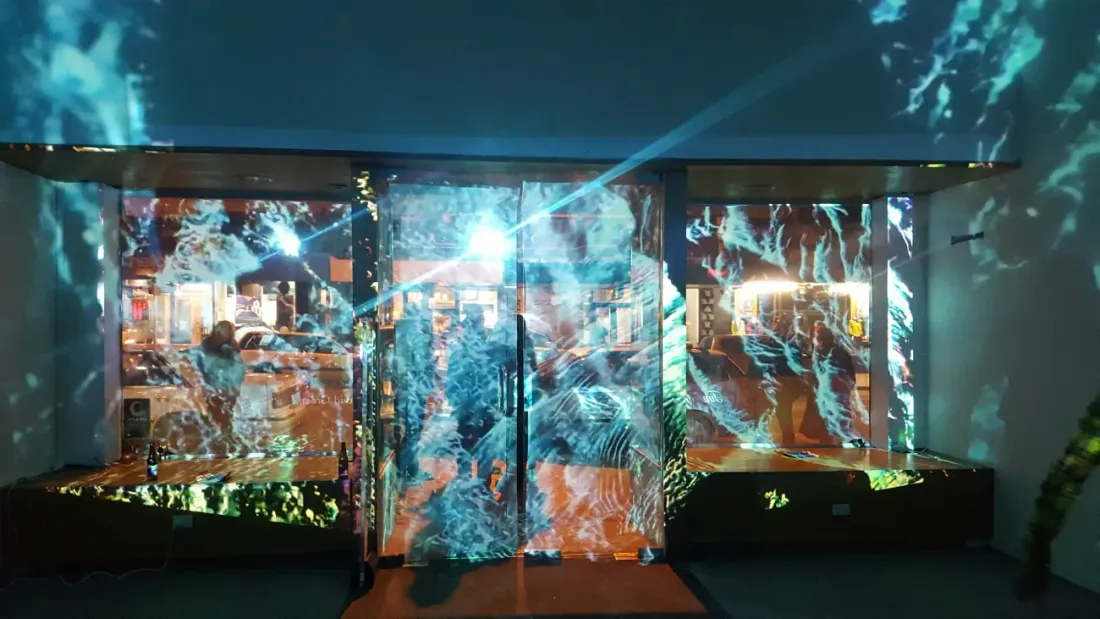
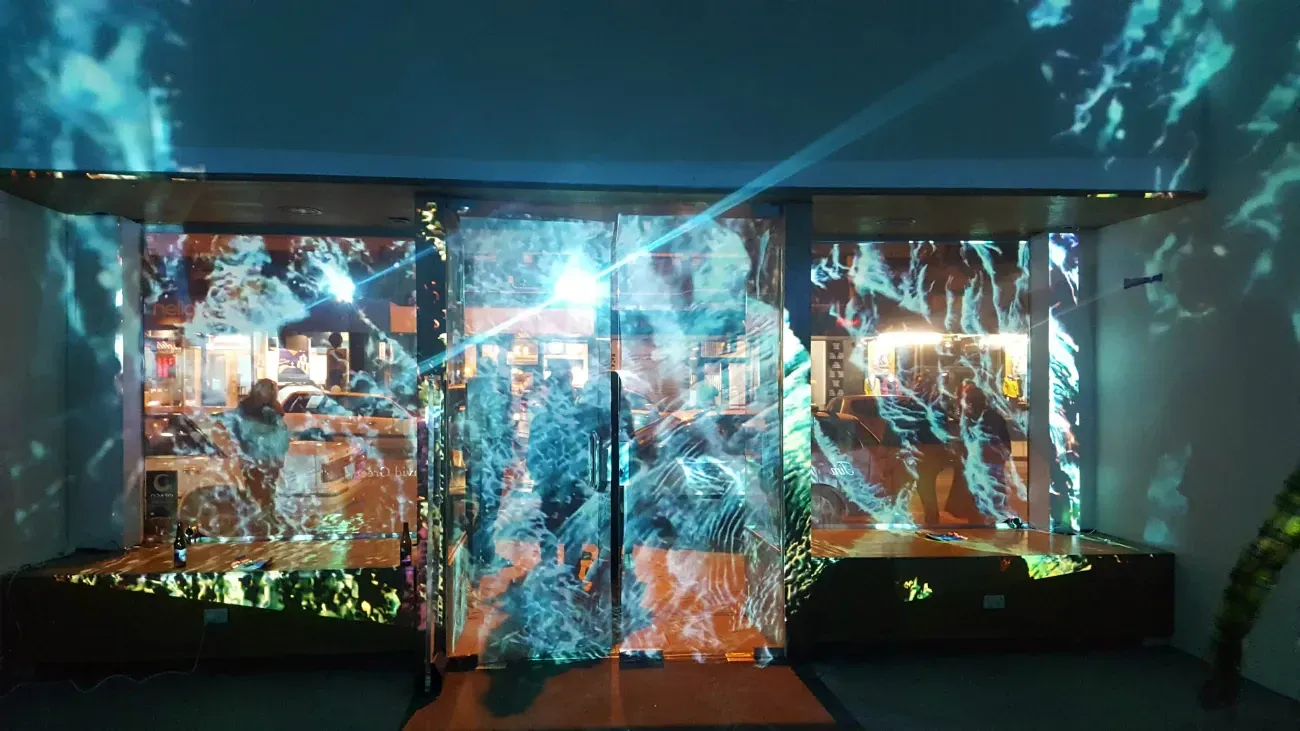
Firing Up Artists in Schools
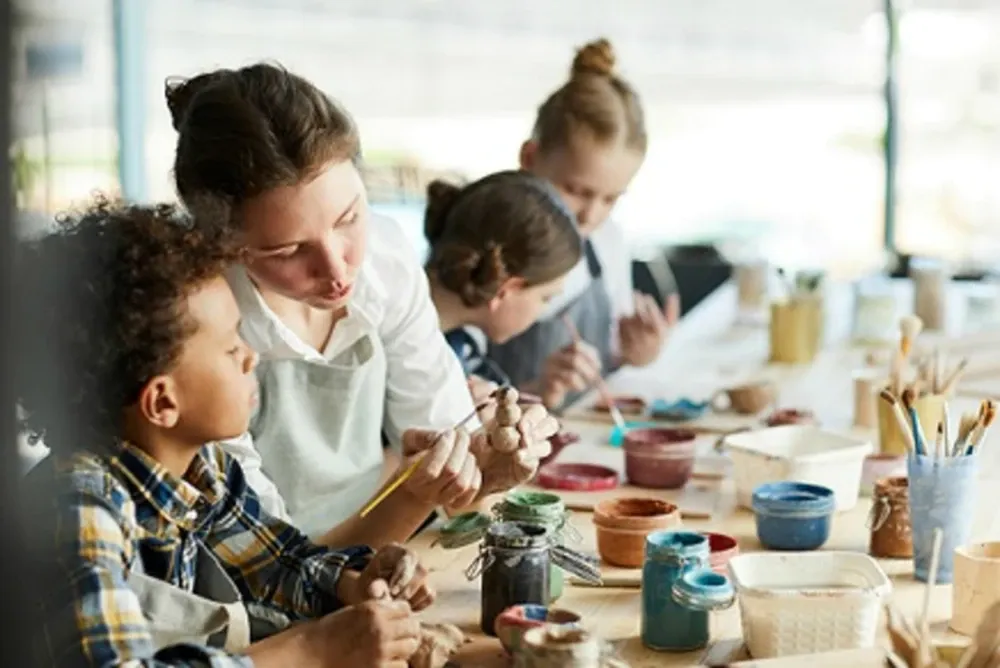
Creatives in Schools image - Ministry of Education.
An artist in schools programme was high on the wish lists of many in the arts sector when the new coalition government came into power. Two years on it’s a reality, albeit modestly.
A Creatives in School scheme was announced on the back of the budget back in June, and now details for submission by ‘creatives’ (as they are being called) are out. Professional artists and creative practitioners can submit an expression of interest to the Ministry of Education - either with a school they have a relationship with, or to be hooked up with one - and then submit a joint proposal for a creative project that lasts anywhere from eight to 20 weeks.
Just over 300 projects in an equivalent number of schools or kura (of the approximate 2530 in the country) will be funded over the next four years. In the June announcement the Ministry said that only 24 of these will occur in 2020 (clearly a tester period), before increasing to 153 by the year 2024. Allocated per project is $10,000 for the creative or creative group with a requirement of 100 contact hours with students and teachers. Also included is up to $4000 for the school’s time, and up to $3000 towards school materials and travel costs.
There was criticism that the programme is not backed up by a wider strategy for the arts across government, nor stronger investment in the actual arts curriculum. In an opinion piece in June, ‘Why are we not resourcing all teachers to be creatives?’ Professor Peter O’Connor noted: “The Ministry of Education hasn’t developed any new resource material to support the teaching of the arts in more than 15 years… In the announcement of the Creatives in Schools scheme, there is no mention of the arts curriculum. Instead it ties the outcomes of the project to the same old generic and self-limiting competencies belonging to every subject. It’s almost as if the Ministry has forgotten we still have the arts in the National Curriculum.” Yet at the same time there have long been calls for actual artists to get to work in the classroom rather than expect teachers to have these skills.
And that ‘creative’ term? “We’re using the term ‘creatives’ to make it clear that this programme is about creative learning experiences and creative thinking,” the Ministry writes. “You don’t need to be an ‘artist’ or describe yourself as one – there’s creativity in game design, fashion design, spoken word, storytelling, and much more.”
Arguably there’s also creativity in every field of endeavour, so it will be interesting to see how this nervousness about the role ‘artist’ pans out. The programme is open, rather than curated - dependent on the quality of applications rather than an active identification of artists who are excellent facilitators and educators.
So far the programme announcement has received zero media attention, that I can see. It deserves some decent reporting, with some international comparisons.
Jacinda Adern also has a piece on The Spinoff this week about valuing our artists, which mentions the Creatives in Schools scheme.
Climate Change Strikes
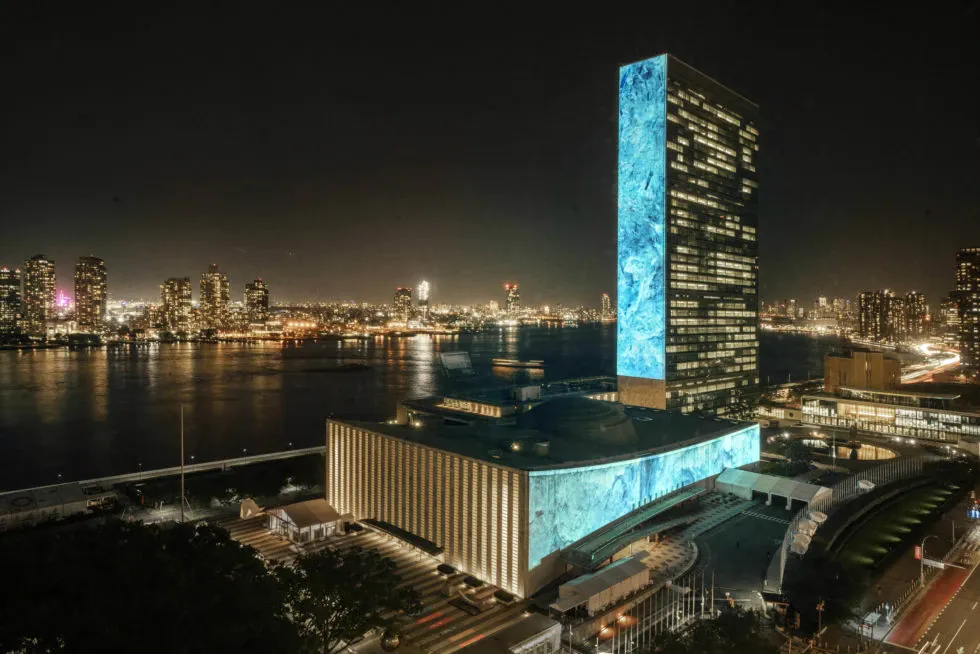
Voices for the Future.
It’s an important week for action on climate change (support your tamariki this coming Friday). And making the biggest headlines as a New Zealand artist this week was Joseph Michael with composer Rhian Sheehan with Voices for the Future. Following his sublime projection of an iceberg cracking on the entire outside of the Auckland Museum a few years back, Michael has done the same in New York on the UN with the addition of the words of six young advocates, including Greta Thunberg. The Guardian has by far the best pictures while Michael also talked to The Spinoff.
This has coincided with two addresses on climate change given by Jacinda Adern inside the UN.
Also on The Spinoff, former festival director Carla Van Zon has issued a call for artists to make their voices heard. Internationally Frieze reports huge numbers of arts organisations have declared a climate emergency and encouraging participation in the climate change strikes. Are New Zealand organisations doing enough?
Interesting International News
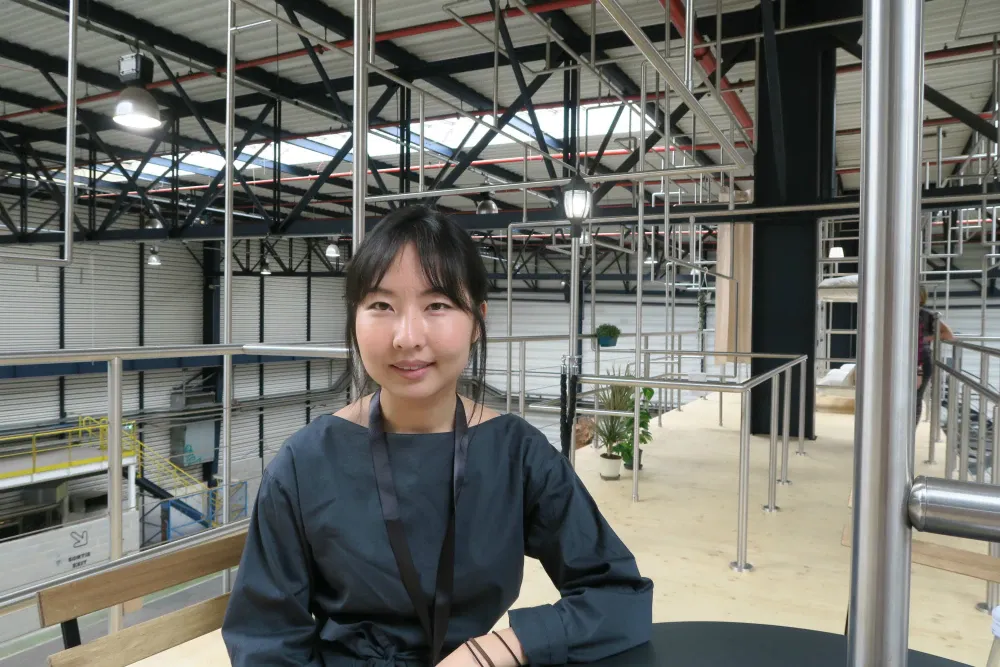
Yona Lee with her installation at Lyon
The first European installation of Yona Lee’s large immersive labyrinthian works with public handrails and barriers (seen in New Zealand at Te Tuhi, Auckland and City Gallery,Wellington ) has opened in Europe, at the 15th Lyon Biennale in France. Aaron Lister from City Gallery spoke to Yona for Contemporary Hum. The Lyon Biennale is a great art and industry fit for her: it is set in a former washing machine factory and part of the Biennale’s brief was for the artists to work with local manufacturers - in her case a specialist handrail company.
Meanwhile Auckland’s Luke Willis Thompson’s new work provides a powerful new twist on the criticism of his 2018 Turner Prize nominated work autoportrait. Luke was commissioned to create an artwork for the cover of leading international art magazine Flash Art, pictured here. This work and the works in an accompanying Berlin exhibition at Galerie Nagel Draxler are part of the ongoing conversation and collaboration the artist has been having with Diamond Reynolds, the girlfriend of Philando Castile, who was shot dead in the United States by a police officer in 2016 - the subject of autoportrait. The new work features Reynolds and Castile’s car taillight - the excuse for which they were stopped by a police officer - but the exhibition also features (as able to be read here) Willis Thompson’s letter to the editor of Artforum about an article on protests at his exhibition.
“I’m inclined to believe your treatment of the story is not at all in the service of black thought and humanity but is simply a contemporary form of click-based race-baiting,” the letter runs. In this light, co-opting the cover of direct competitor Flash Art, as art project appears another great conceptual art Duchampian chess move by the artist.
Art in vacant spaces
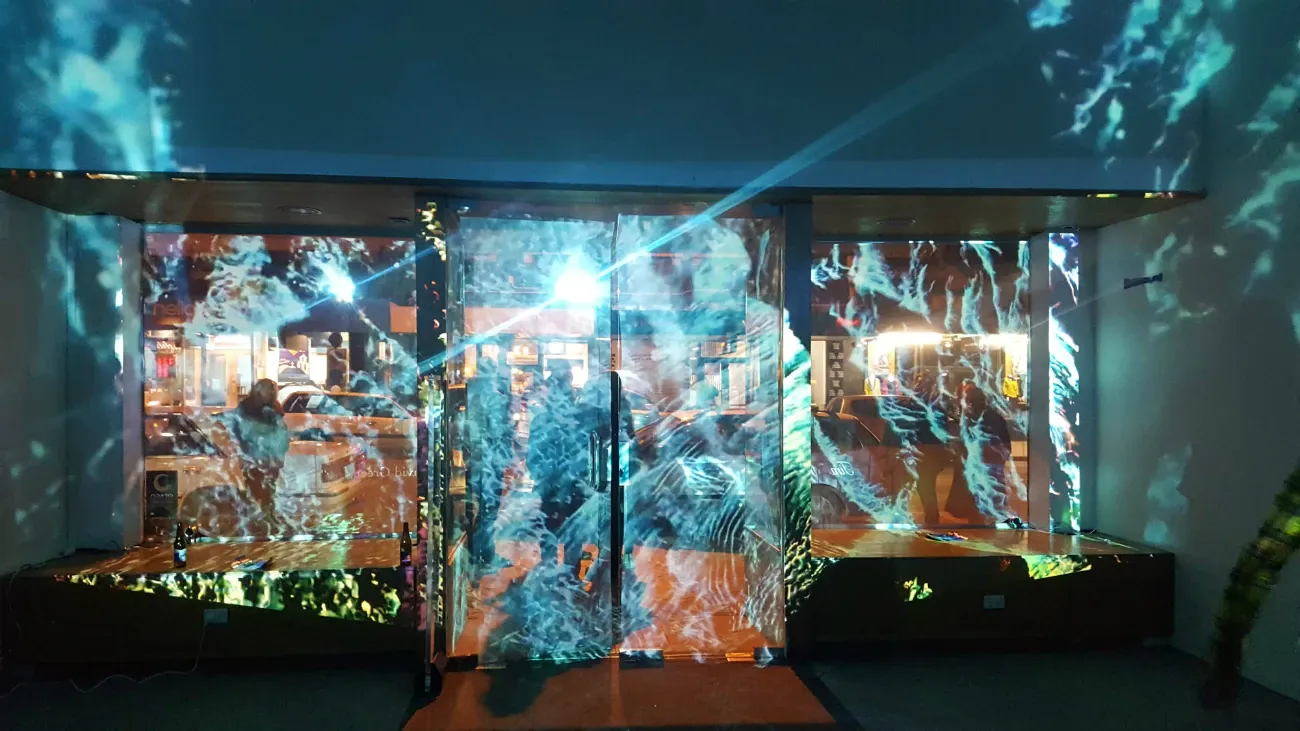
David Green Time and Tide, Dunedin
Nelson is launching its own vacant space programme for arts projects Make/Shift Spaces, and has begun with Viewfinder a mobile contemporary art window space for month long programmes. 207 Trafalgar Street is the first address and it currently features a work by Catherine Russ. The programme has found a home for the Nelson section of the National Festival of Architecture, with a pop-up space open this week for the public to contribute ideas for the CBD, as well as space for the Nelson Arts Festival (opening 18 October).
Other creative vacant space brokers in New Zealand include Christchurch’s longrunning Life in Vacant Spaces and the Dunedin Dream Brokerage (which last year picked up the work of the Urban Dream Brokerage there and in other centres). Dunedin’s brokerage is currently hosting Time and Tide a bold night-time projection work in a vacant shop space by David Green which is "a love song to Aotearoa's rivers, wetlands, foreshore and seabed."
Redecorating Taranaki is a unique 2019 project where new artefacts are being made from the collected stories of the community for New Plymouth museum Puke Ariki’s heritage collection (local news story here). The project is being run by jewellers and artists Jennifer Laracy and Sam Kelly, who last year set up The Jewel and the Jeweller in New Plymouth as a hub for jewellery making. Kelly is currently showing some great sculptures at Wellington’s Millers O’Brien which are - rather suitably - made from cow bone.
Recommended and inspiring reading
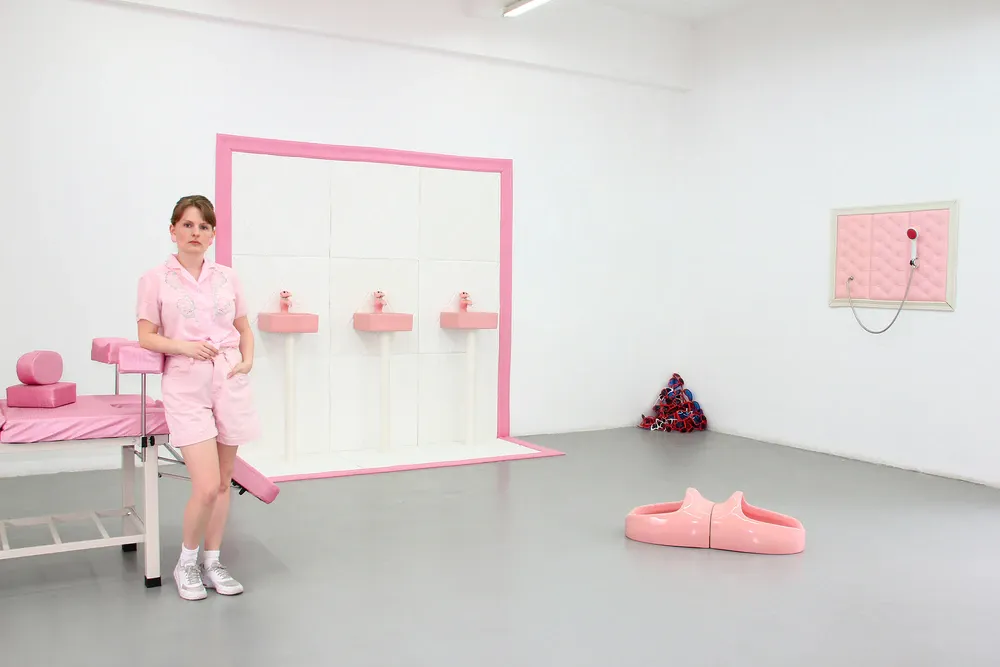
Emily Hartley Skudder at CEAC in China.
The bravest piece of writing this week is surely on Pantograph Punch: artist Emily Hartley Skudder’s beautifully written and illustrated story about encountering gross sexism and ‘rape-art’ by another artist on a residency in China - and what she did so powerfully about it. The residency had been arranged through the Wellington Asia Residency Programme and, given the way host organisation CEAC reacted, WARC have confirmed they will no longer be working with them.
I’m always finding New Zealand platforms for the arts online that I didn’t know about, and that deserve to be in our Lowdown Directory to online arts media (updated annually, please send in your links). This week it’s blog Watch This Space. As it says on the box, this is art historian Reuben Wood’s “thoughtful reflections on the ever evolving street art, murals and graffiti scene in Christchurch. Watch this Space also run tours of the CBD’s street art and provide a gallery and a map online.
Do we need more McCahon? Shannon Te Ao asks what our focus on McCahon says about us at the expense of contemporary artists over on The Spinoff Art section, while Hamish Coney has published the second part of an interesting road trip with McCahon over on Newsroom.
Justin Paton corners the experiential market, bless him: how to look at art and not experience fatigue. He provides a guide to the ABC.
Going offline, a new journal for indigenous writing has been announced this week. Tupuranga, edited by Faith Wilson, is calling for submissions.